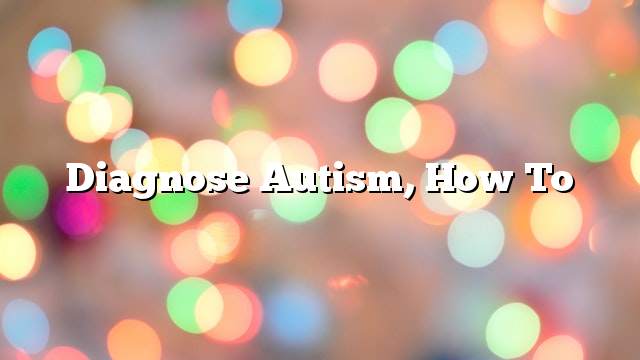How to Diagnose Autism
Autism is a neurological disorder that affects brain function, inability to develop social skills, communication and cessation of cognitive and language development, leading to isolation and introversion of the autistic person, and appears during the first three years of the baby.
Diagnosis of autism
Diagnosis of autism through the doctor to make non-laboratory tests of the child’s development and mental development, and through the doctor’s work to talk with parents to learn about the social and behavioral skills of the child in addition to language capabilities and the extent of change and development of these factors, In collaboration with parents, diagnosed the disease at an early age at the end of the first year of the child’s life, as they were previously unable to diagnose autism only with the end of the second year or third year to ascertain the extent of the disease, by the following things if the An autistic child can not speak certain words such as the word “Papa” and “Mama”, and he can not look at the face of other people, and the child can not smile when he does his homework and does not respond to those around him.
Symptoms and symptoms of autism
1 – inability of the child to try to move his body as appropriate.
2 – The child’s feeling of hardness when he carries a certain thing and tries to escape.
2 – The child looks to the viewer as if he is deaf and does not hear or respond when hearing his name and non-response to the voices around him.
3 – failure of the child with autism in the process of imitation like other children of his age.
4 – Note the failure or failure in the process of growth capacity for language and non – language communication.
Causes of Autism
1. Bilogic reasons: such as the mother’s suffocation by suffocation during childbirth, German measles, brain inflammation or convulsions in the feeding process.
2 – Genetic causes: Any genetic studies have confirmed the association of autism with chromosomal abnormalities in most cases.
3. Disturbance in the nervous system.
4 – a defect in perception.
5. Family and psychological reasons.
